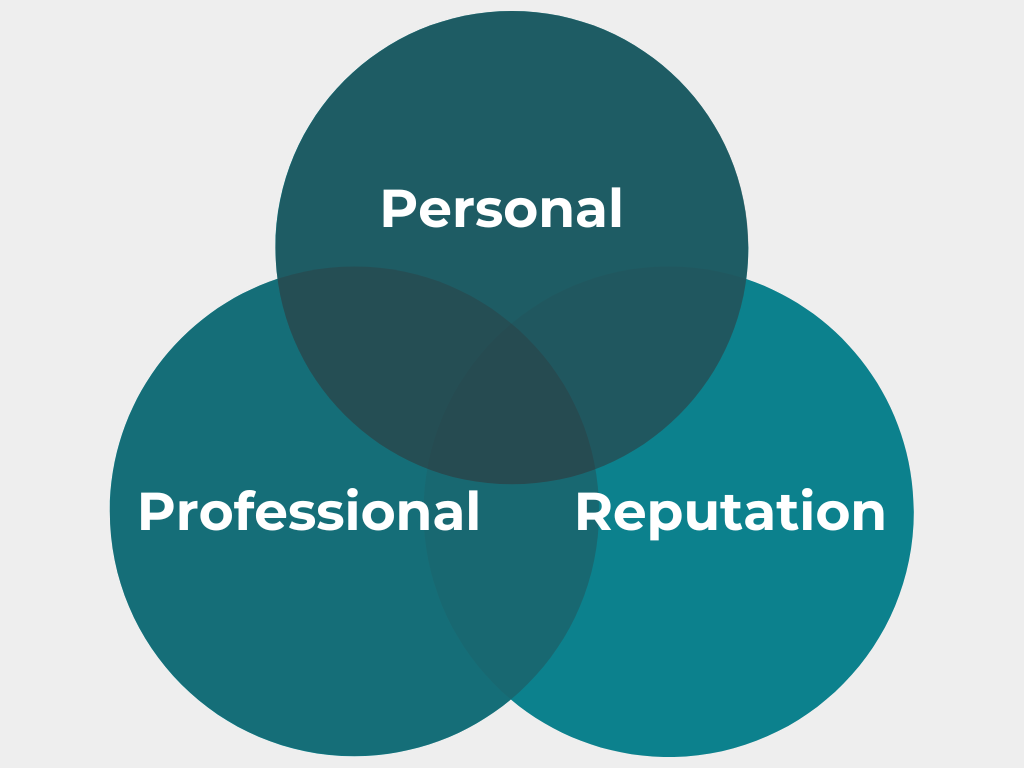The Hidden ROI of Character: Why Small Behaviours Predict Everything

CEOs with high character ratings achieve an average return on assets nearly five times higher than their low-character counterparts. Yet most business owners never think about character as a measurable business asset until they watch a potential partnership dissolve over breakfast.
The Breakfast That Cost Someone Everything
Years ago, I attended a networking breakfast filled with business owners from various industries. As I sat down, I noticed a man across from me. He was tall, well-dressed in a tailored three-piece suit, and carried the kind of presence that suggested he’d be worth meeting.
That thought lasted exactly as long as it took for breakfast to be served.

The background: The man hadn't followed the café's ordering system properly, so when the server tried to confirm his order, his response dripped with arrogant impatience: "I don't know… What did I order?" (Yes, these were his exact words.)
What followed was a masterclass in what behavioural scientists call "cross-situational consistency". When someone's pattern of behaviour in one context reliably predicts their behaviour in all others.
What ensued was a confusing exchange where he expected salmon, without ordering salmon. After some additional huffing, the server made a swift decision to extricate herself from the situation and placed his breakfast down in front of him. His response? He threw the plate frisbee-style into the middle of the table. Not happy with this level of dramatics, he began violently stabbing the egg yolks, sending them flying. Some landed dangerously close to my white shirt. No acknowledgement, awareness or apology. Just pure rage at a minor inconvenience.
In that moment, I made three calculations:
- This is how he handles any situation where he doesn't get his way
- This is how he likely treats his employees, vendors, and anyone with less perceived power
- There is zero chance I would introduce this person to anyone in my network. My reputation is worth infinitely more
This research confirms what I intuited: I had just witnessed his leadership character in action.
The Science: Why How You Do One Thing Really Is How You Do Everything
The phrase "how you do one thing is how you do everything" sounds like motivational poster wisdom. But neuroscience and behavioural psychology tell us it's accurate and either helping or hindering you in your business.
You Have 100 Milliseconds to Make an Impression
Studies from the Kellogg School of Management show that people make trustworthiness judgements within 100 milliseconds of encountering someone, and these snap judgements remain remarkably stable even with significantly more time and information. We're not just judging on appearance; we're unconsciously processing behavioural cues that signal whether someone operates with consistent character or convenient character.
First impressions about trustworthiness significantly impact people's willingness to accept risk, directly influencing future decisions about work relationships, negotiations, and partnerships. In business, this translates to investors deciding whether to fund you, partners deciding whether to collaborate with you, and customers deciding whether to buy from you.
Your Brain Seeks Behavioural Consistency
Behavioural consistency refers to people's tendency to behave in a manner that matches their past decisions and behaviours. It's a judgment shortcut our brains use to predict future behaviour. We do this because it works. Research confirms that nonverbal behaviour exhibits remarkable consistency across different situations and time periods, often revealing stable personality patterns that transcend context.
From an evolutionary standpoint, this makes sense: unpredictable people are less likely to be trusted and thrive in social environments. Inconsistency is associated with irrationality, deceit, and incompetence. It generates reactions of disappointment, anger, and confusion that create tremendous social pressure to remain consistent.
The Business Case: Character as Competitive Advantage
Here's where this moves from philosophy to finance: CEOs with high character ratings from employees achieved an average return on assets of 9.35% over two years. Nearly five times higher than the 1.93% ROA for CEOs with low character ratings.
The numbers compound across every business function:
- Reputation economics: Each additional star in your business rating can increase revenue by up to 9%. Meanwhile, 64% of global consumers avoid brands after just one bad experience.
- Trust velocity: 97% of consumers conduct online searches for local businesses before engaging, and 87% reverse purchase decisions after reading negative reviews about how a company operates.
- Leadership effectiveness: Character-driven leadership correlates directly with stronger financial performance, higher employee engagement, and greater innovation. Organisations that invest strategically in character development are building a sustainable competitive advantage.
- The reputation tax: Businesses with just one negative article ranking online risk losing up to 22% of prospective customers. With four or more negative articles, that loss jumps to 70%.
My impression of the man at breakfast was that he wanted to get validation of his frustration by highlighting the server’s incompetence. What he actually did was demonstrate his leadership character under minor pressure, and I’m confident it cost him potential business relationships in that room.
The Framework: Three Spheres of Behavioural Consistency

Think of your behaviour as operating across three interconnected spheres:
Sphere 1: Personal Standards
How you treat service staff, respond to minor frustrations, handle inconveniences, and show up when no one important is watching. This is your character baseline. The behaviours you default to when there's no immediate consequence.
Sphere 2: Professional Standards
How you negotiate, handle setbacks, treat employees, respond to criticism, and make decisions under pressure. This is where most business owners think their character matters, and they're half right.
Sphere 3: Reputation Capital
The trust others extend to you based on the consistency between Spheres 1 and 2. This is the multiplier effect. When people observe that you treat everyone with the same standards, your reputation capital compounds. When they observe inconsistency, we risk our reputation capital.
People judge on two dimensions. Warmth (benevolence) and competence (capability), with warmth taking priority in trust decisions. The man at breakfast may have had competence signals (the suit, the presence), but he failed the warmth test making everything else irrelevant.
When organisations connect character traits directly to business objectives, linking curiosity to innovation goals or integrity to customer trust metrics, character development becomes strategic rather than aspirational.
The Audit: Making Character Measurable
Most business owners have never quantified their behavioural consistency, but we should. Because this could be one key to greater business growth. Here's how to start:
1. Shadow Observation Exercise
Ask three people who see you in different contexts (family member, team member, client/partner) to independently describe your typical behaviour under stress. Look for patterns. The behaviours that show up across all three contexts are your character signature, for better or worse.
2. Micro-Moment Mapping
For one week, track your reactions to minor inconveniences:
- The server gets your order wrong.
- Traffic makes you late.
- Technology fails during a presentation.
- Email tone feels disrespectful.
- Someone challenges your decision.
These micro-moments reveal your actual operating system. Under pressure, we often don't rise to our aspirations, but default to our unconscious habits.

3. Reputation Reality Check
- Google your business name + "reviews" + "complaints".
- Check what former employees say on Glassdoor.
- Review your last 20 email exchanges. What tone pattern emerges?
- Ask your team to respond anonymously: "What behaviours does our leader consistently demonstrate under pressure?"
85% of customers trust online reviews as much as personal recommendations, and 49% of consumers need at least a four-star rating before engaging with a business.
4. Character KPIs
Start tracking behaviours alongside financial metrics:
- Response time to difficult conversations.
- Ratio of credit given vs. credit claimed in team settings.
- Consistency of standards (do you treat the intern the same as the investor?).
- Follow-through rate on commitments.
- Frequency of blame vs. ownership language.
Link these character traits to your business objectives. For example, if you value innovation, track how often you respond to new ideas with curiosity vs. shutting it down or criticism.
What Changed for Me
After that breakfast, I refined my own standard: I treat every interaction as if my reputation depends on it, because it does. Not performatively, but authentically.
The business owners I most want to work with operate the same way. They understand that character isn't about being perfect; it's about being consistent. It's about recognising that the person you are when you're frustrated with a server is the same person who will show up when a deal goes sideways or an employee makes a mistake.
Research from UNH even offers some encouragement here: if trust is established initially but violated, people tend to be forgiving because they revert to that initial impression. More interestingly, if someone wasn't trusted initially but then proves trustworthy through unexpected positive actions, they can become the most trusted in future encounters. Character can be rebuilt, but only through consistent demonstration over time.
The Standards
As you build and scale your business, ask yourself: If someone wrote a case study about your behavioural consistency, using examples from how you treat your barista, your assistant, your investors, and your competitors, would it read as the story of one person, or several?
The business case is clear: your character is strategy. Your smallest behaviours are your loudest signals. And in a world where 97% of potential customers, partners, and employees will research you before engaging, the cost of inconsistency has never been higher or more measurable.
The man at breakfast is still out there somewhere, probably wondering why his networking never converts to partnerships. He doesn't realise he's already told everyone exactly who he is.
You get to decide what your behaviours tell people about you.
What pattern would three people in different areas of your life describe if asked about your behaviour under pressure? If the answer makes you uncomfortable, you've just identified the highest-ROI work you can do. Want to get deep on this? Check out The Leaders Lab. Intake in March 2026.
Discover New Blog Posts
Stay updated with our latest blog posts.
.jpg)
The Emotional Intelligence Advantage: Why Small Business Leaders Need To Upskill Their EQ More Than Ever

The Benefits and Pitfalls of Being Too Nice as a Small Business Leader

Rediscover Your Spark: How Small Business Owners Can Reignite Passion with Ikigai
Subscribe to our newsletter
We'll keep you up to date with business, leadership and strategy insights in your inbox.
